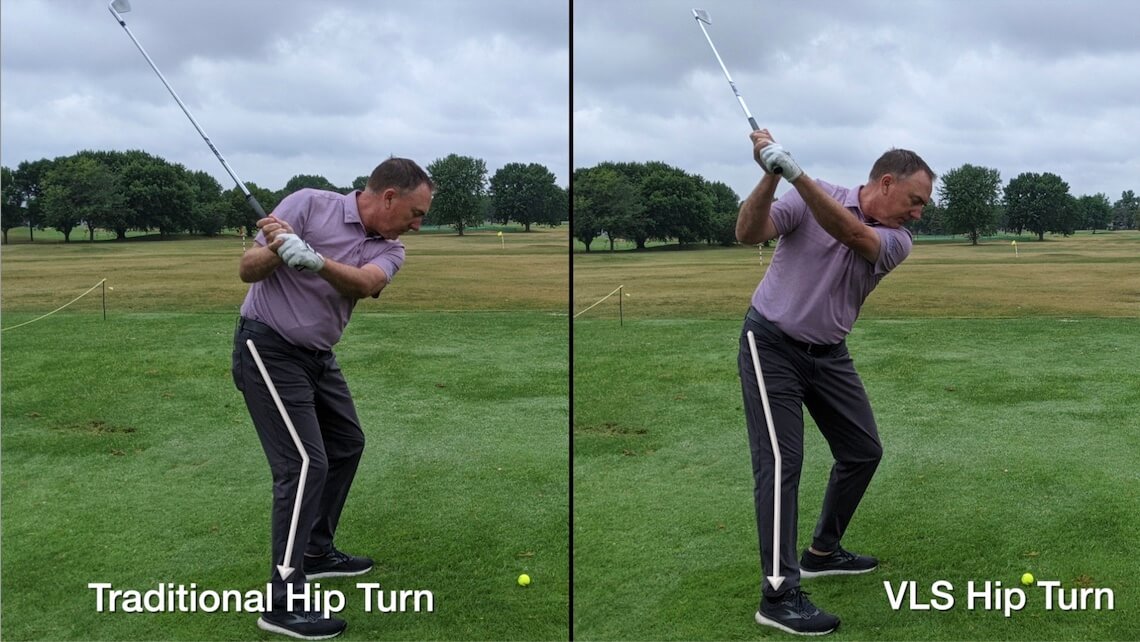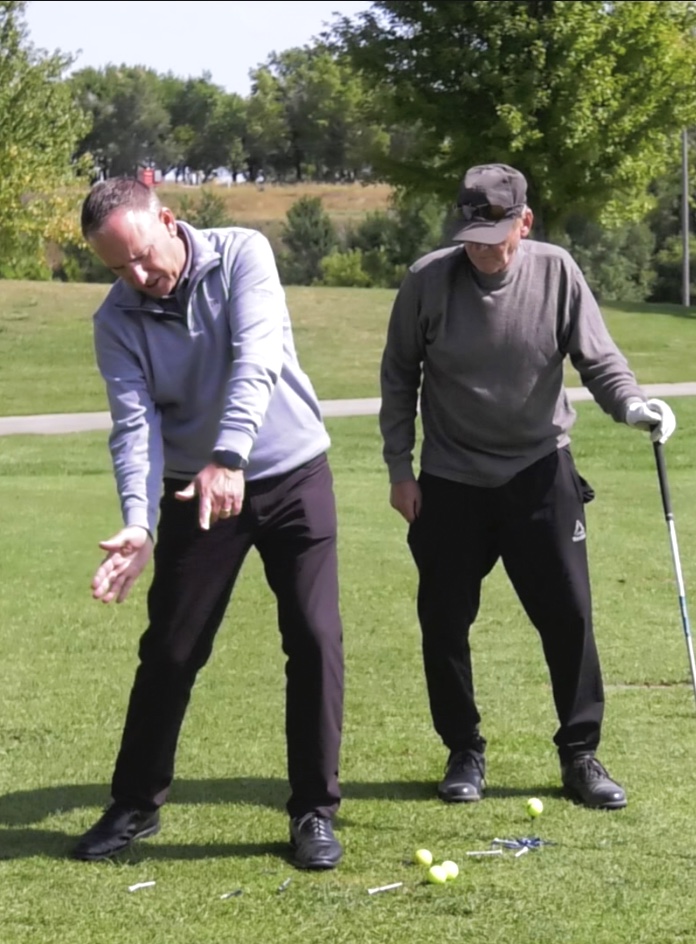The Bad Lie Golf Book Review
The Bad Lie Golf Book Review: Could This Book Help You Play the Best Golf of Your Life?
PGA Teaching Professional Todd Kolb has just announced the release of his new book, The Bad Lie: Why Traditional Golf Instruction is Failing You (And What to Do Instead).
The title itself offers a compelling premise. Has traditional instruction really been failing us? With all the technology and insight available, how could the best advice of 2022 possibly be wrong?
And what would it mean for the average golfer if there was more effective advice out there?
Let’s take this piece by piece. We’ll look at the logic behind Kolb’s book, how he’s laid out his guidance in the pages, and whether The Bad Lie could be game-changing for you.
We’ll start by taking a close look at the claim at the heart of the book.

What is “The Bad Lie”?
“If there’s one thing I wish I could tell the world about the game of golf, it’s this: golf is not an exclusive sport. Golf is for everybody.”
This is how Kolb begins his introduction, laying out the mission that has guided his work as a golf instructor for over two decades. Kolb is passionate about helping each golfer find his or her own power in the game, and this is why he’s set out to take down what he calls the Bad Lie.
The Bad Lie is the idea that in order to play a great game, we need to be able to swing like the professionals. Extreme body rotation, precision timing, superhuman muscle power… all those swing elements that are difficult to achieve with age, injury, or limited practice time.
The techniques used by the top players in the world show up in the magazines read by casual golfers who don’t have the time or resources to give everything they have to the game. They’re repeated at lesson tees and over a round of drinks at the clubhouse.
This traditional advice isn’t wrong. It works for someone. But, Kolb claims, it doesn’t work for golfers who aren’t young, fit, and able to dedicate their days to perfecting a complex swing.
As weekend warriors work diligently to follow this instruction only to keep failing, they lose hope of ever improving their game. The Bad Lie restores that hope.
In his book, Kolb introduces an entirely new method—one that banks on the strengths of the average golfer. If you follow Kolb’s work, you may already recognize this method as his increasingly popular Vertical Line Swing System. In his book, he expands on the concepts already shared in his video series. (More on that in a moment.)
He lays out neglected techniques for building speed and power and improving accuracy, all while avoiding the pain and strain that especially plagues senior golfers.
But make no mistake: this book is designed for everybody and every body.
Who is This Book For?
The Bad Lie may sometimes read as if it’s tailored to older (Kolb calls them “experienced”) golfers. But it’s not written exclusively for seniors. As the author mentions several times, the beauty of his technique is that golfers of all levels can use it to play a better game with more ease.
That said, The Bad Lie specifically addresses the challenges that are common for those who are “experienced,” have had surgery, or are simply not as strong, flexible, or stable as traditional instruction demands.
And for senior golfers especially, Kolb makes the enticing promise that his swing technique can help retirees play the best game of their lives.

Isn’t that the dream? To finally have hours to spend on the course and to spend those hours victoriously?
Beyond the physical benefits of a less strained swing, the Vertical Line Swing System is also designed for simplicity and repeatability. This makes it revolutionary for those golfers who may still be young and fit but are too busy to put in serious practice hours.
Who is Todd Kolb?
If you’ve been following our channel, Kolb needs no introduction. But if you’re new here, read on.
Todd Kolb is a PGA Teaching Professional—more specifically, he’s a four-time Golf Digest Best in State Instructor. He’s been named the Minnesota PGA Teacher of the Year and has worked with students ranging from high school players to a major championship and LPGA Tour winner.
Todd and his team have also amassed a YouTube channel with 200,000 subscribers and counting!
He is also the Director of Instruction for the Sanford POWER Golf Academy.
What’s Inside the Book?
So, what exactly can you expect to learn from The Bad Lie?
The book is broken into five parts:
- Part One – It’s Not You, It’s Them: Why Traditional Instruction is Failing You
- Part Two – The Vertical Line Swing System: Building a Powerful Golf Swing, Piece by Piece
- Part Three – Faults & Fixes: Diagnosis and Cure for the Most Common Golf Mistakes
- Part Four – The Vertical Line System Short Game: Playing Smarter Around the Green
- Part Five – The Vertical Line Swing Strategy: Prioritize Your Practice to Transform Your Golf Game
Within each section, you find straightforward instruction, including clear explanations of the ways in which traditional instruction might be to blame for your greatest golf struggles.
Our Favorite Thing
One thing we particularly appreciate about The Bad Lie is the way Kolb has organized it for easy skimming. Using features like bulleted checklists, he’s designed the book to be easy to reference on the golf course or driving range. This includes:
- Step-by-step drills
- Setup checklists for every type of golf swing
- Checkpoints to determine the specific error behind your worst golf shots
- A scoring system to help strategize your practice as you build your new golf swing
But make no mistake: you won’t actually have to put in a ton of practice time to master the Vertical Line Swing System. While you are learning brand new swing techniques, these techniques are much simpler than everything else you’ve tried.
So Is It Basically the Vertical Line Swing System in Book Form?
Not exactly.
If you’ve already completed the Vertical Line Swing Series, you will already be familiar with most of the ideas found in the middle of the book. However, you may find the checklists and drills a great resource as you continue to practice your technique.
What makes the book different from the video series is the additional insight Kolb provides in Parts One and Five. These sections dig into the philosophy and strategy behind the Vertical Line System. Here, you’ll learn things like:
- How and why to think differently about your swing as an average golfer
- The theories behind generating speed and power
- Which skills to focus on as you take your game to the next level
- How to shift your mindset to improve your strategy
- What it really takes to break 90
- How to break 80
Rather than focusing exclusively on swing technique, The Bad Lie widens the lens and introduces a new approach to the entire game.
Bottom Line: Could This Book Help You?
Most likely, yes. In all honesty, we’ve seen and heard from countless golfers who have adopted the Vertical Line Swing. And they have achieved drastically lower scores as a result. Senior golfers especially have found deeper confidence and more joy in their game using Kolb’s method.
If you’re willing to put in a little time to read the book and apply this technique, there is a strong chance your game will improve.
We recommend this read for any golfer.
Where Can I Buy The Bad Lie?
The book is currently available in both paperback and ebook on Amazon.
That’s Our Opinion. What’s Yours?
Does this sound like a book you’d like to have in your golf library? Have you tried the Vertical Line Swing for yourself? If so, are you interested in digging deeper?
Jump into the comments and let us know what you think!




I ordered your book but cannot get into your contest so here is my Amazon Oder #113-5132310-2787454 if I win in the drawing I would like the vertical line short game system
Robert,
Thanks for the purchase. Hope you find the information helpful and enjoyable. I will pass your information forward. Much appreciated!
Todd, I really like this book. I do have a question though. In the “Rehearse impact drill” step 6 says to allow a little forward lean in the club shaft. Not sure what this means exactly, can you explain that better?
Thanks for the nice comments. Appreciate the question…a little forward shaft lean means having the handle (top part) of the club slightly in front of the golf ball at impact. Here is another video on releasing the driver if you are interested https://youtu.be/mqufejiasdE
Todd I really love the book but can you please answer me something. When you say set your feet slightly closed when hitting driver do you keep your shoulders square to the target line or are they slightly closed also.
Thanks Todd from Jeff in Liverpool England I only started playing golf in May 2022 after having a stent fitted after a heart attack. I always thought golf was for rich people I was given a half set of 20 year old clubs which are falling apart as I can not afford anything else as I was made redundant but I love playing and with reading your book I shot 81 which I am made up on a par 72 . Carry on the great work
Jeff,
Good question. Yes, we want the feet, hips and shoulders slightly closed to the target line with the clubface square to the target line. Appreciate the kind words on the book…hope it is helping your game.
I love the book. I have never hit my shots so solid and I am 82..
Question:
I am following the book but my shots are starting out more straight and then turning over. What am I doing wrong.
Thanks
Dennis, thank you for the kind words on the book and congrats on your progress. Good for you!When you say turning over, do you hook? If you enjoyed the book and learning, you would really like our new membership site. See here https://www.vlsgolfacademy.com/
I am not getting the high baby draw.. Shots Are lower and tend to be straight and then hook slightly
Dennis,
Need more in to out swing path with a slight open face. This is a good place to start https://youtu.be/kxU1wGlEj74